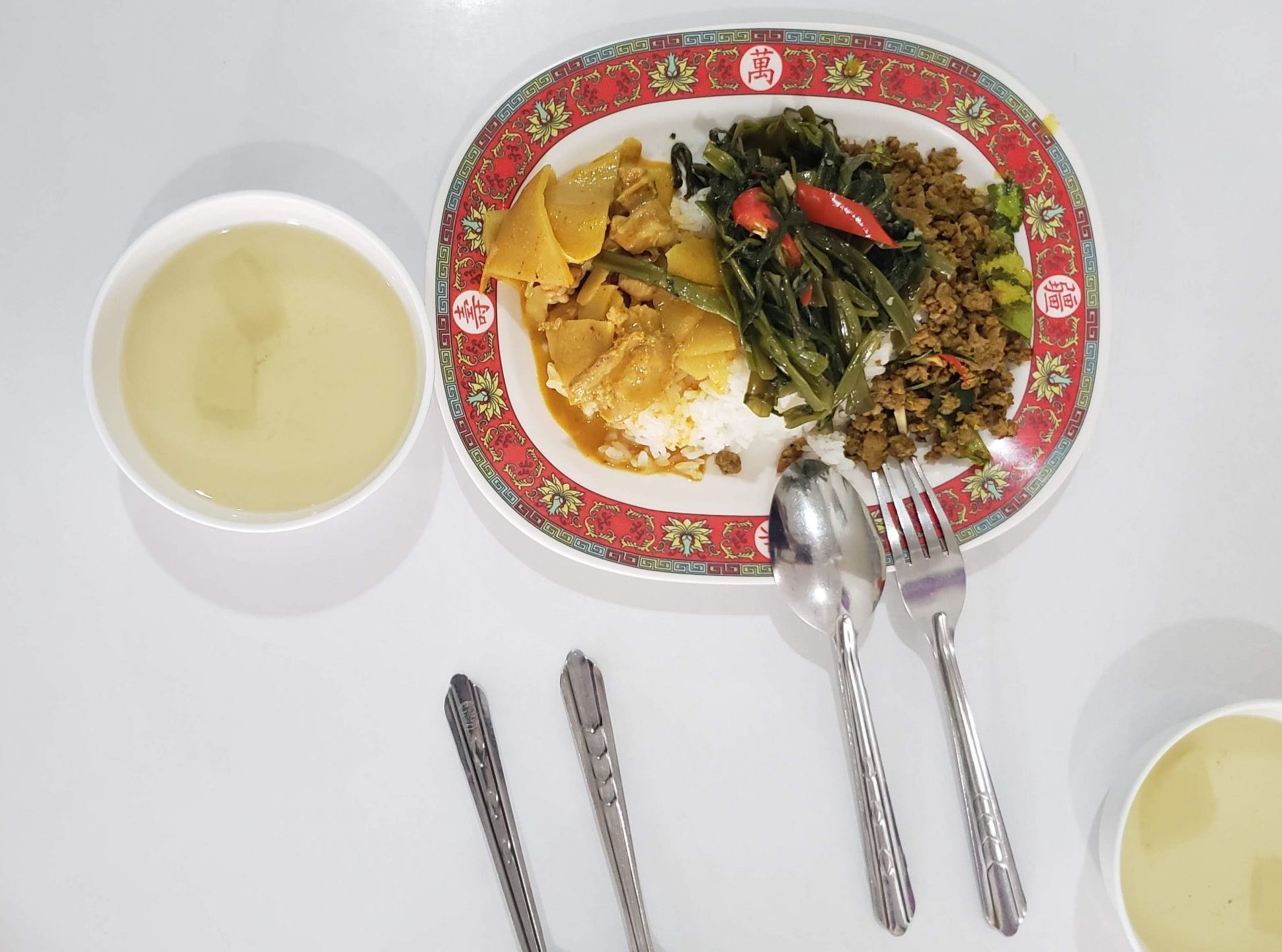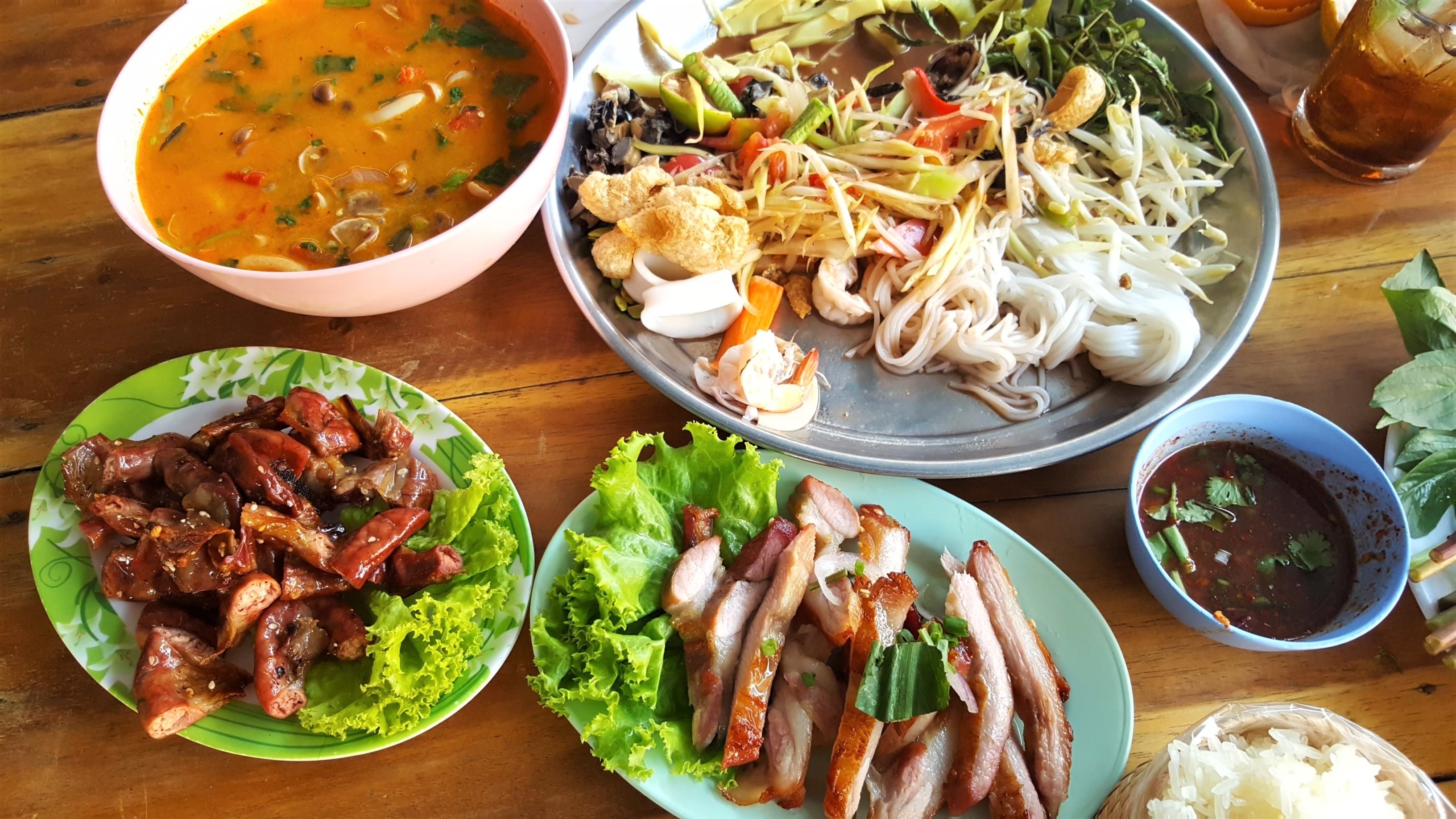One of the many joys of Thailand is the cuisine. Visitors and locals alike look forward to a table filled with scrumptious dishes, featuring perfect blends of sweet, salty, sour, and, of course, spicy! Faced with these exotic delights, many visitors may wonder if there’s a special way to eat Thai food—technically, there isn’t. Being generally amiable people, we love the fact that foreigners love our food and don’t expect you to know our etiquette. But there are a few tips to keep in mind, which may help make your experience more authentic, if not more delicious!
Let’s talk about chopsticks first. We don’t only use them for noodles, which tend to be more Chinese-inspired dishes. In fact, the true way to experience Thai cuisine is with the help of a spoon and fork. Spoons are the main utensil, held in the dominant hand, while the fork is used to push the food in for the perfect bite. Thai food is typically prepared with tender, bite-sized morsels that don’t require a knife. But if you’d like smaller pieces, use the fork to hold the meat or vegetable and cut with the spoon’s edge. Once you get the hang of this, you’ll wonder why you ever chased your food around the plate with just a fork.
A note about the dishes.
Some restaurants that cater to foreigners may ask if you want appetisers served before entrees. Otherwise, most places will just bring out food as it’s ready. Don’t expect something under “appetisers” or “snacks” on the menu to automatically come out first. Even at restaurants featuring European or American cuisine.
While it’s tempting to dig in with the spoon or fork (or hands) laid out on your table. Just don’t. Most restaurants will serve shared dishes with a serving spoon, which you should use. It’s not only polite, but it avoids spreading germs. If there’s soup, you’ll get your own little bowlful to savour. If there are any sauces, make sure to use the little serving spoon that comes with that too. Or ask for your own little sauce dish. When serving yourself, it’s always a good idea not to cover your rice completely. Keep some plain rice on your plate to help alleviate any burning if you discover a dish is too spicy.
There are some incredible mealtime related Thai superstitions. Such as when served a whole fish, you must never flip it to get to the portions on the bottom. If you do, the boat that caught that fish may flip too. So, if you can, use the serving spoon and fork to separate and remove the bones. Or ask the waitstaff for help. Those who are practiced can take care of this with such smooth mastery. If you do manage to capsize the boat, however, don’t worry, it isn’t a strongly held belief, so it’s not likely you’ll elicit gasps of horror if you flip that fish!
As for table manners, most commonly accepted rules apply. Don’t chew loudly or with your mouth open. Don’t reach across the table – ask for what you need to be passed. Don’t talk with your mouth full – but if you must, cover your mouth. When you’ve finished eating, place your fork and spoon together on the plate. If you use toothpicks, cover your mouth as you do so. And so on.
But there may be a few things different in Thailand. Not many people understand that Thai dishes are served with additional spices that aren’t necessarily meant to be eaten (unless you want to). It’s common to see healthy garnishes of lemongrass, bergamot leaves, and peppercorns on your plate. You can push those, as well as any other leftover bits, off to the side of your plate. It isn’t impolite.
Speaking of politeness and propriety, when offered food that they don’t like or are reluctant to try, the proper way to decline is to say is gin mai pen, which translates to “I don’t know how to eat this”. This may seem odd, but saying “I don’t like this” may suggest that the host or cook is at fault, either by making a poor choice or preparing a bad dish. “I don’t know how to eat this” means it’s the fault of the person refusing. As a foreigner, you won’t be expected to know this, and it doesn’t really translate well. But, if you remember, a gentler “no, thank you” or “I can’t, thank you” should work just as well.
In the end, as long as you’re enjoying your meal and aren’t making a mess, you should be all right. But if you want an immersive dining experience, try emulating. Or ask. Seeing you try to eat like a Thai will bring appreciative smiles all around. And who knows – you may be eating like a local in no time!


